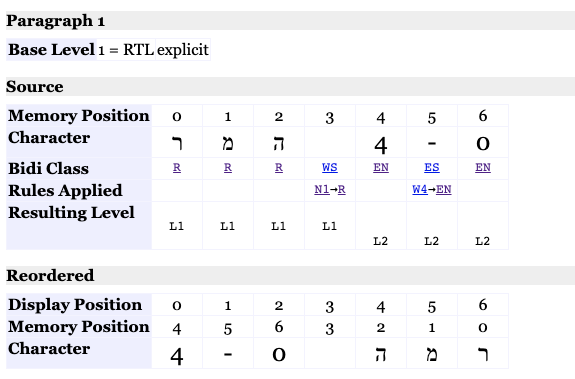When my website displays Hebrew text mixed with numbers, and there is a number with a dash in the middle, the number with the dash in the middle is displayed RTL. For example, with the text:
רמה 4–0, it should display 4-0 instead of 0-4, since it is a numeral sequence, and the '4' precedes the '0'. However, on the browsers I checked, it displays the '0' before the '4'.
Since this could occur any place in the system data is displayed, it would be much preferable to have a CSS solution that does not require something like:
<span style="direction:ltr">4-0</span>
The general direction for text should remain RTL, but numbers with dashes should be displayed LTR. Should display properly on the major browsers (IE, Firefox, Chrome).



<bdi></bdi>tag. – Garb